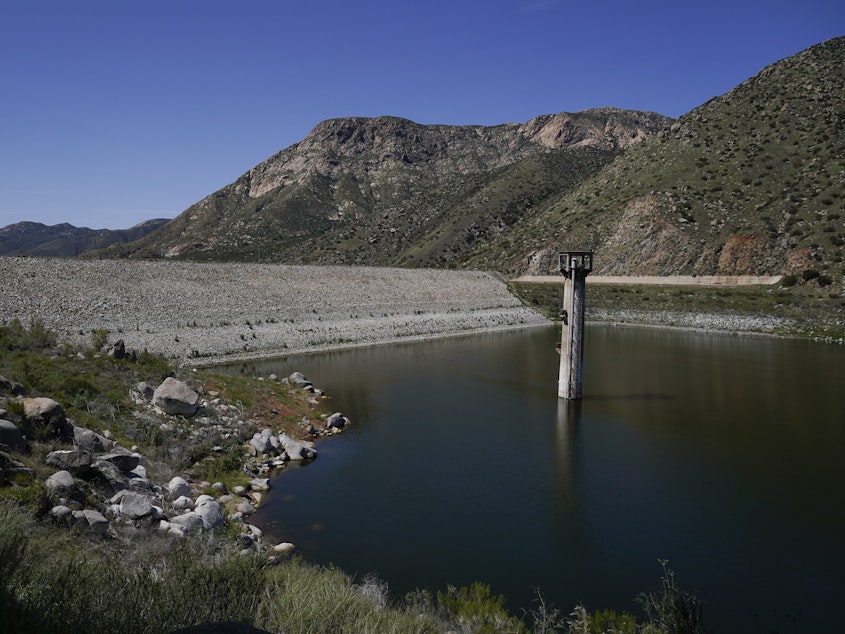More than 2,200 dams are in poor condition, posing danger to communities

More than 2,200 dams built upstream from homes or communities are in poor condition across the U.S., likely endangering lives if they were to fail, according to an Associated Press analysis.
The number of high-hazard dams in need of repairs is up substantially from a similar AP review conducted just three years ago.
There are several reasons for the increased risk. Long-deferred maintenance has added more dams to the troubled list. A changing climate has subjected some dams to greater strain from intense rainstorms. Homes, businesses and highways also have cropped up below dams that were originally built in remote locations.
"All of the sudden, you've got older dams with a lower design criteria that now can potentially cause loss of life if they fail," said Del Shannon, an engineer who is president of the U.S. Society on Dams.
"The number of deficient, high-hazard dams is increasing," he said, adding that without investment in upgrades, that number will continue to rise.
The actual number of high-hazard dams in poor or unsatisfactory condition is likely even higher than the AP's tally, although it's unclear because some states don't track such data and many federal agencies refuse to release that information.
The nation's dams are on average over a half-century old. They have come under renewed focus following extreme floods, such as the one that caused the failure of two Michigan dams and the evacuation of 10,000 people in 2020.
The $1 trillion infrastructure bill signed last year by President Joe Biden will pump about $3 billion into dam-related projects, including hundreds of millions for state dam safety programs and repairs.
Fixing dams could cost nearly $76 billion
Yet it's still just a fraction of the nearly $76 billion needed to fix the tens of thousands of dams owned by individuals, companies, community associations, state and local governments, and other entities besides the federal government, according to a report by the Association of State Dam Safety Officials.
Since 2019, California regulators have downgraded four of San Diego's water supply dams from fair to poor condition due to deterioration and concerns they could fail due to an earthquake or extraordinary rainfall.
During "a big earthquake, you never know what's going to happen, if this is going to hold," said Samuel Santos, a longtime resident who frequently fishes near El Capitan Dam.
As a safeguard, the water level of El Capitan Reservoir is intentionally kept low, meaning there is less water available amid a severe drought.
"These reservoirs are very important," said Republican state Sen. Brian Jones, whose district includes El Capitan Dam. "We need to start spending the money on them to retrofit them, to get them up again back to full capacity."
States haven been giving dams more scrutiny
The number of high-hazard dams in poor or unsatisfactory condition has risen partly because some states have stepped up inspections and reassessed whether old dams endanger new downstream developments.
New York has about twice the number of high-hazard dams in poor condition as it did in 2018, when the AP collected data for its earlier analysis. The increase came as officials pushed to assess all high-hazard dams that were previously unrated.
After more than 70 South Carolina dams failed during heavy rains in 2015 and 2016, the state ramped up staffing, undertook more regular inspections and increased efforts to map potential flood zones. As a result, the number of high-hazard dams in deficient condition in the state rose by a third from 2018 to 2021.
After Michigan's dam failures, the state added $19 million for dam safety to its 2022 budget, plus money to hire more regulatory staff. Democratic Gov. Gretchen Whitmer recently signed legislation providing an additional $250 million for dams, including about $200 million to repair those damaged by the 2020 floods.
The plan prioritizes high-risk dams "that can be ticking time bombs if they are not addressed," said state Rep. Roger Hauck, a Republican whose district experienced flooding when the dams failed.
Addressing the problems posed by old, unsafe dams can be challenging. Repairs can be costly and take years to complete. Attempts to remove dams — and empty the lakes they hold back — can spawn legal battles and a public outcry from those who rely on them for recreation or to sustain nearby property values.
A pair of high-hazard dams built in the mid-1800s near Cleveland are among those in need of major repair. Upper Shaker Lake, commonly known as Horseshoe Lake, has been drained as a precaution after it developed sinkholes and cracks. Local officials last year approved a $28.3 million plan to remove Horseshoe Lake Dam, return the area to a free-flowing stream and rebuild Lower Shaker Lake Dam.
But the plan faces backlash from some community members who hired a law firm and engineering company, launched a fundraising drive, and gathered about 2,000 online petition signatures to try to save Horseshoe Lake.
"The lake is a beautiful, calming feature that is the central park of the Heights neighborhood," said musician Bert Stratton, a resident helping to lead the efforts. "It's where people come to congregate, and they have for over 100 years."
The Northeast Ohio Regional Sewer District, which manages stormwater projects, said Horseshoe Lake provides little flood-control benefit and that the district won't pay to rebuild it.
"People need to understand there is a major risk at this facility," including the "probable loss of life if the dam blew out," said Frank Greenland, the district's director of watershed programs. [Copyright 2022 NPR]

